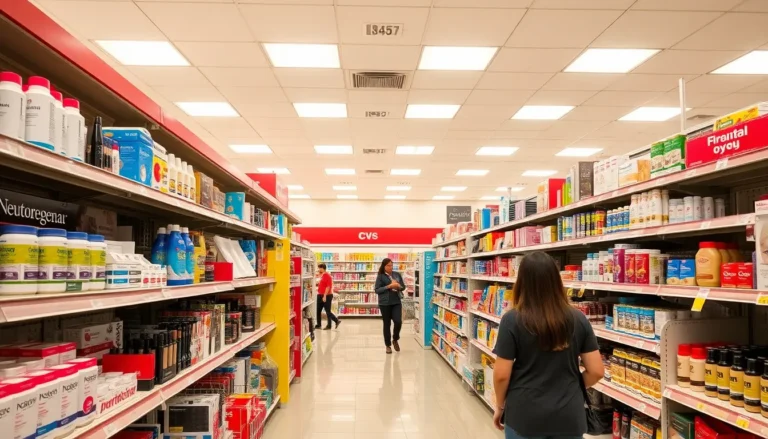In the fast-paced world of social media, clarity is key. Enter the Social Media Service Level Agreement (SLA) — the unsung hero of online engagement. Imagine it as a superhero cape for brands, ensuring they meet customer expectations while juggling likes, shares, and the occasional meme. It’s not just a fancy document; it’s a promise that keeps brands accountable and customers happy.
Think of an SLA as the user manual for social media interactions. It outlines response times, content standards, and the fine print of social media management. Without it, brands risk becoming the social media equivalent of a cat video gone rogue—entertaining but ultimately confusing. So, let’s dive into the world of SLAs and discover how they can transform social media strategies from chaotic to classy.
Table of Contents
ToggleWhat Is a Social Media Service Level Agreement (SLA)?
A Social Media Service Level Agreement (SLA) defines expectations between a brand and its audience regarding online interactions. This formal document outlines critical aspects, such as response times for customer inquiries, acceptable turnaround times for issue resolutions, and standards for content quality.
In a well-structured SLA, brands specify how quickly they will reply to comments or messages. Frequently, this includes commitments to respond within a specific timeframe, such as one hour for urgent queries and 24 hours for general questions. Consistent response times foster trust and transparency, enhancing customer satisfaction.
Content standards play an essential role in an SLA too. Brands set guidelines about tone, language, and types of posts to ensure compliance with branding strategies. These standards ensure that all social media activity aligns with the brand’s image and messaging.
Additionally, SLAs may include protocols for crises or negative feedback management. Outlining procedures for addressing customer complaints or public relations issues allows brands to act quickly and efficiently. This proactive approach minimizes potential damage to the brand’s reputation.
Without an effective SLA, brands risk confusion in their social media strategies. A chaotic online presence alienates customers and undermines engagement. In contrast, a well-defined SLA helps brands deliver consistent and reliable communication. It serves as a framework for effective social media management, driving successful customer interactions.
Investing in a Social Media SLA strengthens brand loyalty and engagement. By clearly stating commitments and expectations, organizations can maintain positive relationships with their audience.
Importance of SLAs in Social Media
SLAs play a vital role in ensuring effective social media engagement. Establishing clear expectations fosters strong relationships between brands and their audiences.
Benefits for Businesses
Businesses experience enhanced customer satisfaction through SLAs by setting clear response time expectations. Increased trust builds when brands consistently meet those timelines. Having defined content standards minimizes miscommunication and aligns the brand’s voice across platforms. Moreover, timely issue resolution preserves brand reputation during crises. Businesses also see improved efficiency, as SLAs streamline workflows for social media teams. By outlining protocols for negative feedback, these agreements help brands manage challenges proactively. The overall result is a strengthened brand identity and increased loyalty from customers.
Benefits for Service Providers
Service providers gain clarity through SLAs, defining their roles and expectations in client relationships. Clearly established metrics provide benchmarks for performance evaluation. These agreements protect service providers by specifying responsibilities and limits of service delivery. Additionally, dedicated response times can help prevent overwhelming workloads and improve team morale. Regular reviews of SLA performance lead to continuous improvement opportunities. Clients appreciate transparency and accountability, which can foster long-term partnerships. Ultimately, SLAs empower service providers to deliver consistent, high-quality results while minimizing potential misunderstandings.
Key Components of a Social Media SLA
A Social Media SLA comprises several fundamental components that ensure effective online engagement between brands and their audiences. Understanding these components is essential for maximizing the impact of social media strategies.
Response Times
Response times define how quickly a brand replies to customer inquiries. Brands must specify the timeframes for acknowledging messages and resolving issues. For instance, an SLA could state responses to direct messages within two hours and comments within four hours. Establishing these benchmarks builds trust and sets clear expectations. Customers appreciate timely interactions, which encourage engagement and improve satisfaction. Incorporating a tiered approach for different issues, like urgent versus routine inquiries, further enhances responsiveness.
Content Moderation Guidelines
Content moderation guidelines outline acceptable language and behavior in online interactions. These guidelines specify how brands should manage user-generated content, maintain tone consistency, and address inappropriate remarks. Ensuring moderators understand the brand voice helps create a unified online presence. Setting clear parameters for accepting or rejecting content builds credibility. Brands should also include procedures for escalating problematic posts, ensuring timely intervention when necessary. By defining moderation standards, organizations can cultivate a safe and engaging community around their brand.
Reporting and Analytics
Reporting and analytics provide metrics for evaluating social media performance. These reports enable brands to assess engagement levels and measure the effectiveness of their strategies. Key performance indicators such as response rates, customer satisfaction scores, and engagement statistics help gauge success. Regular analysis of these metrics leads to informed adjustments in social media plans. By incorporating these insights into the SLA, brands can demonstrate accountability and transparency. Ultimately, this data-driven approach enhances decision-making and fosters continual improvement.
Best Practices for Creating an Effective SLA
Creating an effective Social Media SLA requires a strategic approach, ensuring that brands set clear standards for their online engagements.
Setting Clear Expectations
Establishing precise expectations is crucial for successful communication between brands and their audiences. Brands should define response times for various platforms in their SLAs, ensuring consistency in engagement. Clear guidelines on the types of issues addressed and the acceptable turnaround times help customers understand what to expect. Furthermore, outlining protocols for tone and language aligns the brand’s voice across all interactions. This clarity discourages misunderstandings and builds stronger customer relationships, enhancing overall trust in the brand.
Regular Reviews and Updates
Regularly reviewing and updating the SLA enables brands to adapt to evolving social media landscapes. Brands should schedule periodic assessments to evaluate SLA performance against established metrics. Adjusting response times, content standards, or guidelines ensures relevance with changing customer expectations and platforms. Incorporating feedback from social media teams and customer interactions fosters continuous improvements. Staying proactive in this manner allows brands to maintain their effective online presence while responding adeptly to new challenges.
Examples of Social Media SLAs
Social Media SLAs offer real-world illustrations of how brands can implement guidelines for their online interactions. Here are two case studies highlighting their effectiveness.
Case Study: Company A
Company A, a tech startup, developed an SLA to address customer inquiries on social media. The SLA highlighted response times of under one hour for direct messages and under two hours for comments on posts. Their approach included specific language guidelines, ensuring replies maintained a friendly and professional tone. By adhering to these guidelines, Company A boosted its customer satisfaction ratings by 30% within six months. Regular reviews of their SLA further allowed them to adapt strategies based on customer feedback and engagement metrics. As a result, the company fostered trust and loyalty among its audience, enhancing overall brand reputation.
Case Study: Company B
Company B, a retail brand, instituted an SLA to streamline its social media customer service. The SLA established a guaranteed response time of 24 hours for email inquiries and 12 hours for social media messages. Additionally, it defined content standards, setting clear expectations for product post quality and responsiveness to negative feedback. Through these measures, Company B witnessed a 40% reduction in customer complaints related to communication delays. They also implemented a monthly analysis of SLA performance, allowing them to identify trends and improve engagement strategies. This proactive approach strengthened their connection with consumers and reinforced brand loyalty.
A Social Media Service Level Agreement is essential for brands aiming to thrive in the digital landscape. By clearly defining expectations and response times, SLAs not only enhance customer satisfaction but also build trust and transparency.
With well-structured guidelines in place, brands can navigate challenges effectively while maintaining a consistent voice across platforms. Regularly reviewing and updating SLAs ensures they remain relevant and responsive to the evolving needs of the audience.
Ultimately, a robust SLA empowers brands and service providers alike to foster strong relationships and deliver exceptional results in their social media strategies.








